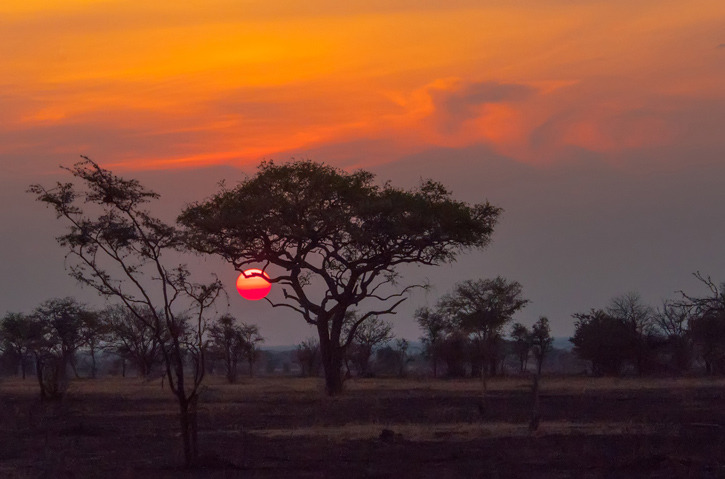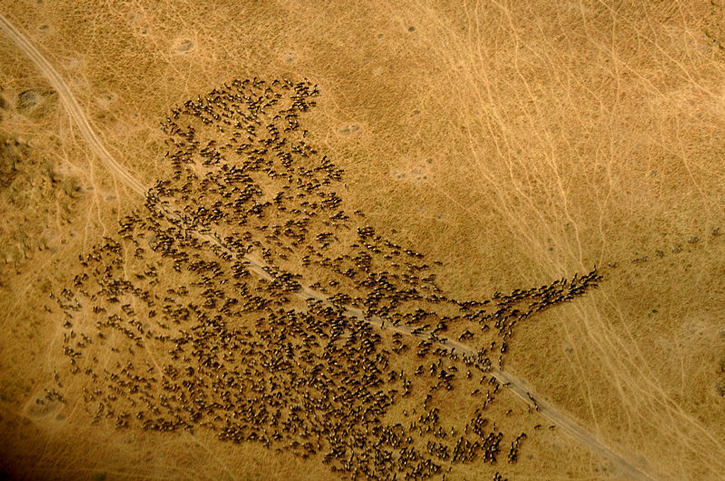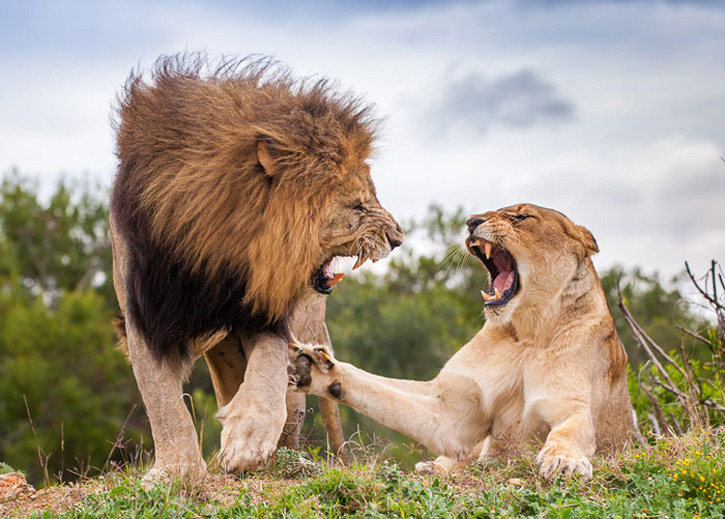SPECIAL FEATURE: BN DOES GREAT MIGRATIONS NOW (PART 1)

I just had one of the most beautiful experiences of my life! And I am so happy to share it with you. Check out this 2-part post written in the middle of the Serengeti in the midst of the Great Migrations.

Sitting in front of our tent, I see an endless conga line of wildebeests, like black stubble along the edge of the ridge line as the giant orange sun sinks far too quickly towards the hot-baked Serengeti.
They low -- some with grunts that rise up like questions, and some some with deep moos answering, "not yet," as they graze contentedly, for now, on the short grass on this side of the Mara River.
Then a hush falls -- an intermezzo before the night shift takes over with their evening serenade. No crickets here, but an equivalent natural orchestra begins to tune up. New birds start to tweet and call.
Then pop, pop, pop, as if tiny bubbles surfacing --- the calls of odd birds called nightjars. Jackals begin their trilly yodels. And the Serengeti Symphony begins.
The Great Wildebeest Migration, is one of the “Seven New Wonders of the World.”
That’s because it is an incredibly beautiful, powerful movement -- the annual mass migration of over 2 million animals, including massive herds of wildebeest, zebra, and antelope, followed by their predators, crossing between the Masai Mara in Kenya and the Serengeti in Tanzania, in search of food and water as the seasons change.
We are traveling with Africa Geographic, a safari outfitter with a network of expert guides, fans, researchers, and journalists. They orchestrated a perfect itinerary, which included our time at the Nomad Serengeti Safari Camp, a mobile camp that was the first of its kind, for a full immersion.
It is set up within the Serengeti National Park, where densities of animals are higher, and the chance of seeing large predators is much greater, than anywhere else. It is home to more than thirty species of large herbivores and over five hundred varieties of birds. And of course there are the lions, leopards, hyenas, jackals, baboons, monkeys, and more.
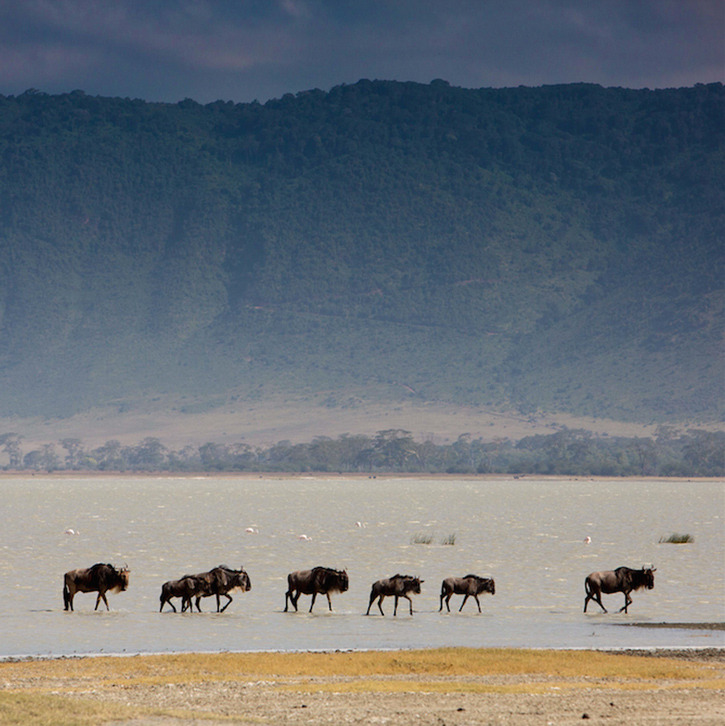
I'm covered in the day's sweat and dust... and there is plenty from riding for many hours in our rover as we tracked the migration of tens of thousands of the beasts from our side of the River to the other.
They are headed to Kenya to satisfy their powerful craving for grass, not necessarily greener, but richer -- full of iron and calcium, not found here on the Tanzania side.
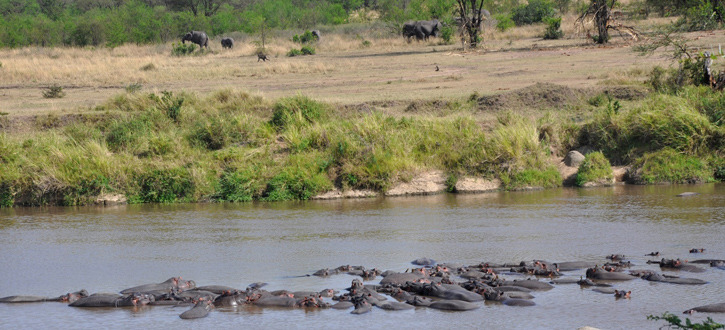
The massive herds have teased us, for five days, as they moved across the plains towards the River, pretending that they were ready to cross, only to turn, at the last moment. Not yet. Not yet.
They hadn't quite summoned their nerve enough to brave the crocodile and hippo infested rocky waters where they knew, from past experience, that a number of their family would surely die.

We sat, patiently watching, trying to position ourselves just so, to see them cross, sadistically hoping to watch a kill -- not because we are mean, but because we know it will happen anyway, and it is a drama like none other. With every false start, we moved to another spot along the Mara, hoping for better luck.
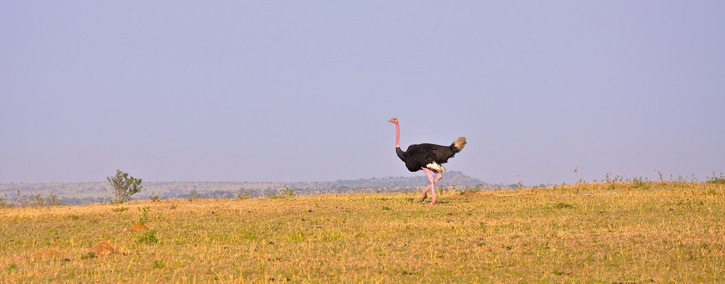
Along the way, we were treated to other delights, which, in my opinion, were just as grand. Giraffes delicately trimmed the tops of the balanite trees, with their babes tending to the lower shoots. Ostriches pranced, showing off their bright pink necks and legs against glossy black plumage.
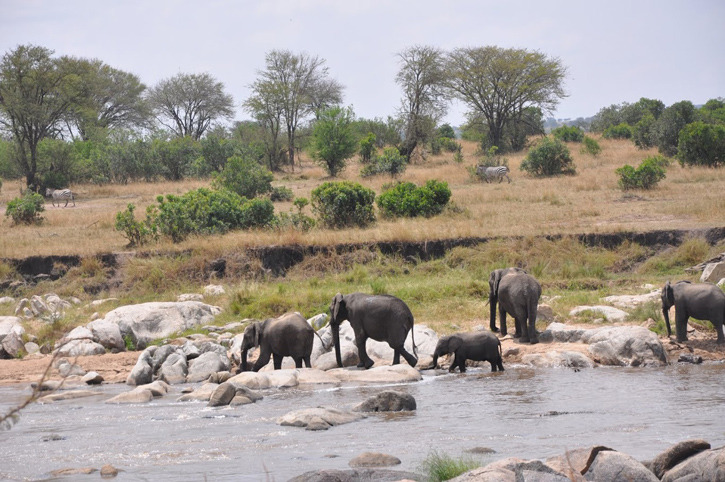
Thin Thomson gazelles, like Lladro porcelains, darted and danced. A pride of lions tugged and chewed at their freshly downed wildebeest meal, as the vultures and Maribou storks gathered to wait their turn.
Groups of elephants lazily plucked at leaves and grasses, snorting and flapping their big gray ears in the hot July sun.
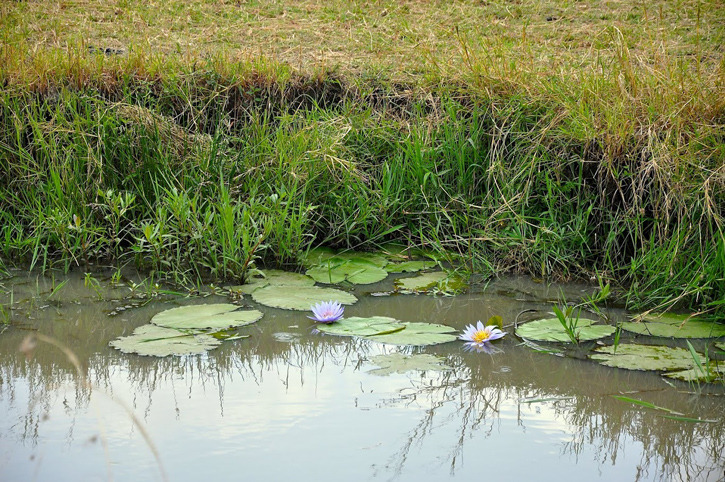
It is winter here. But it is near the equator, so not much difference in temperature. There are fewer flowers -- just a sparse dotting of tiny wild white impatiens every so often, some scrappy weedy plants with pale yellow bottle-brush blooms that you almost overlook -- and one tiny puddle sporting two lilac water lilies -- the only one for miles.

Bright happy colors here are rare. They are all sandy tans, dusty grays, a rainbow of browns, with blacks and whites to punctuate and emphasize. Even the sky is a restrained pale blue, so as not to to distract or call attention.
With a fresh kill, blood reds shock us as flesh gets ripped open, paws and jaws smearing in the feasting, as life leaves one creature to support another.
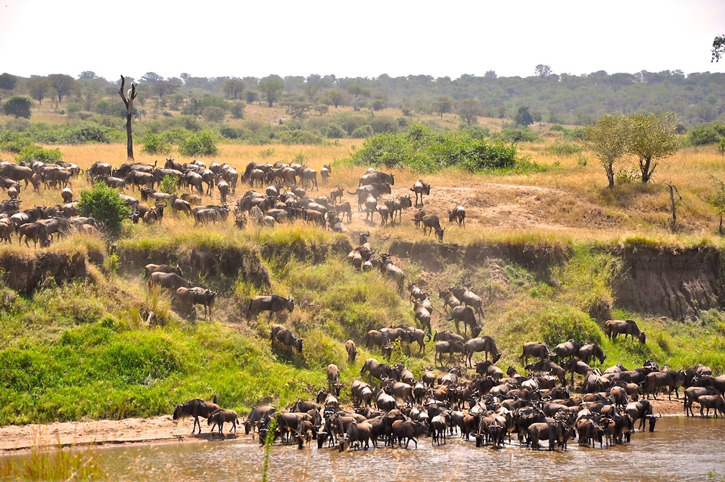
We are all here to watch hundreds of thousands of hooves pound the dirt and whip up the muddy waters in the crossings. It is late in the season. Hundreds of thousands have gone already, as the migrations have been underway for a couple of months now. In fact, I was so bummed because we were told we'd missed it. But there are plenty left on the move.
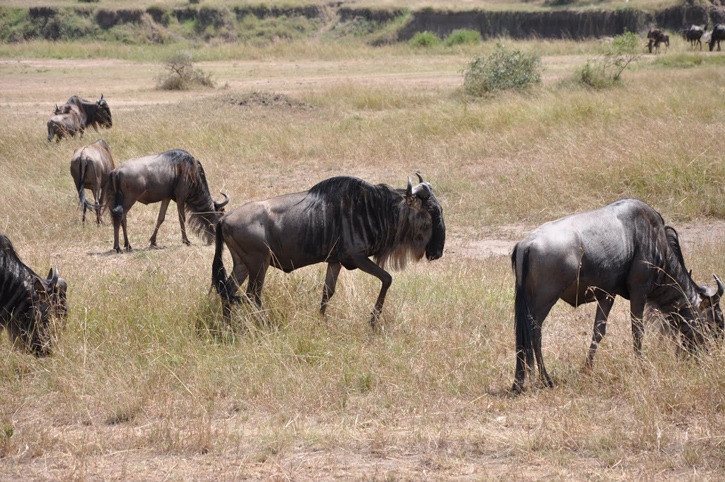
Wildebeests are like living scrap heaps, made of spare parts, haphazardly thrown together. They are related to cattle, as evidenced by their split hooves at the terminals of spindly legs.
Their gray bodies are lean, with no soft spots, and more hard angles than cows have. Their faces mashed flat and long, with light gray beards elongating them further, topped with small versions of buffalo horns. And their tails, edged along the sides with black, smooth from their rumps down to fly-swishing black frayed ends.
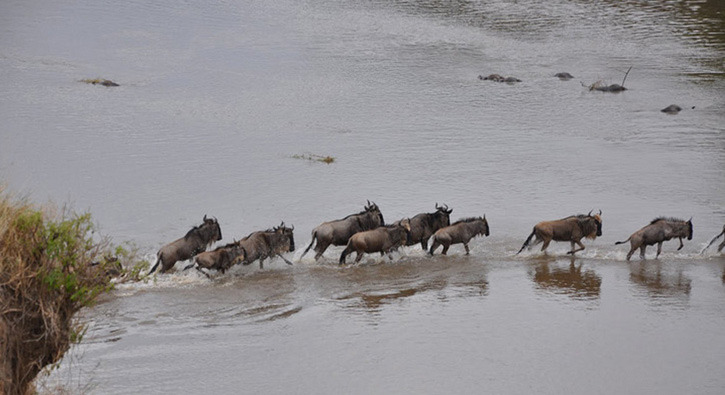
Males and females are indistinguishable. You can't tell their testicles from their teats... but of course their babies can. And they have lots of babies. There are countless herds, each with many many members.
I haven't been able to figure out the ecologic logic -- why they so greatly outnumber their predators -- with tens, perhaps hundreds of thousands of beasts to every lion, crocodile, and hyena.
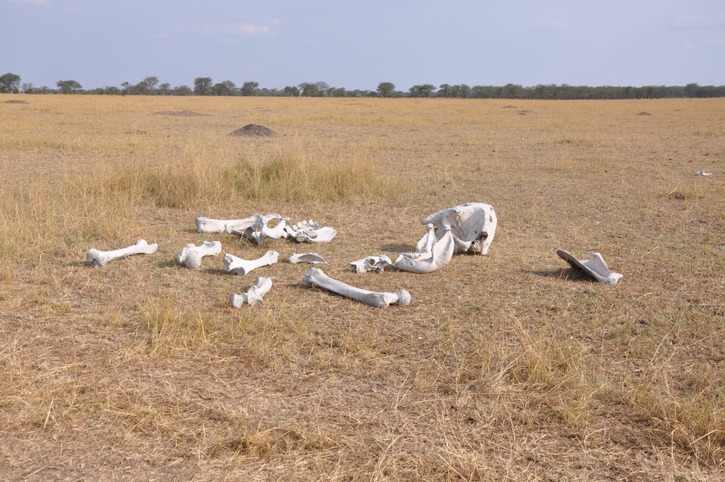
No one starves here. In fact, the carnivores are so full, they resort to killing just for sport, leaving dead bodies to rot and return to the scorched earth, leaving bleached skeletons behind as evidence of their existence.

See BN DOES GREAT MIGRATIONS NOW (PART 2) tomorrow.
Read more about Beautiful Migrations, as they relate to Arts/Design, Nature/Science, Food/Drink, Place/Time,Mind/Body, and Soul/Impact.
Enter your own images and ideas about Beautiful Migrations in this week’s creative Photo Competition. Open for entries now until 11:59 p.m. PT 08.31.14. If you are reading this after that date, check out the current BN Creative Competition, and enter!
PHOTO CREDITS:
- Photo: Courtesy of Serengeti Safari Camp. A cheetah gazes at migrating wildebeest at Serengeti.
- Photo: By Shira P. White. Wildebeest at Serengeti.
- Photo: By Anita Ritenour. Serengeti, Tanzania.
- Photo: by Shankar Raman. T. R. Shankar Raman, Wildebeest Mara.
- Photo: Courtesy of Sun Safaris. Wildebeest on the plains.
- Photo: Courtesy of Africa Geographic. Lions.
- Photo: by Tom Sullam. Wildebeest in Ngorongoro crater.
- Photo: By Shira P. White. Hippos in Mara River at Serengeti.
- Photo: By Shira P. White. Wildebeest and zebra on Serengeti Plains.
- Photo: By Shira P. White. Ostrich on Serengeti Plains.
- Photo: By Shira P. White. Elephants at the Mara River in Serengeti.
- Photo: By Shira P. White. Water lilies at Serengeti.
- Photo: By Shira P. White. Lions feast on a fresh wildebeest kill at Serengeti.
- Photo: By Shira P. White. Wildebeest wading in the Mara River. Tanzania.
- Photo: By Shira P. White. Wildebeest at Serengeti.
- Photo: By Shira P. White. Wildebeest crossing the Mara River with hippos & crocodiles at Serengeti.
- Photo: By Shira P. White. Remains on the Serengeti.
- Photo: By Shira P. White. Crocodiles at Mara River in Serengeti.


